#mughal-e-azam
Text

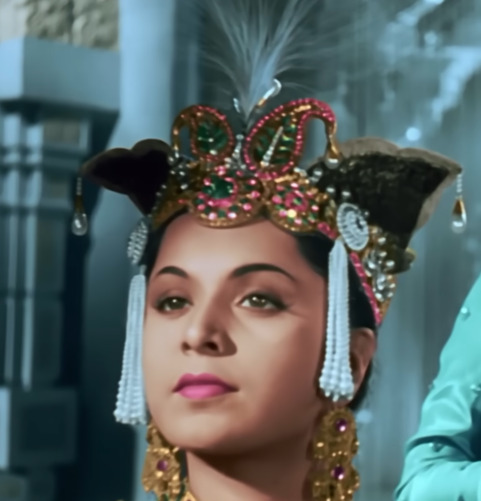
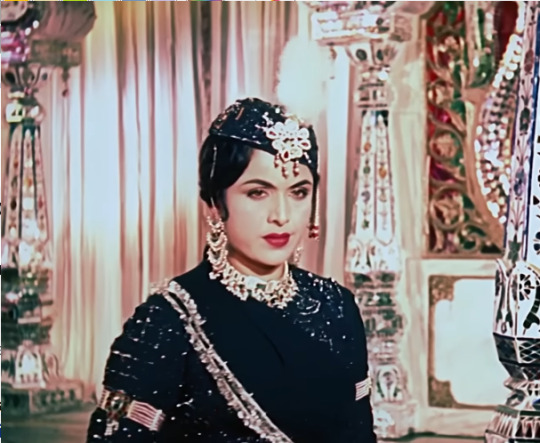
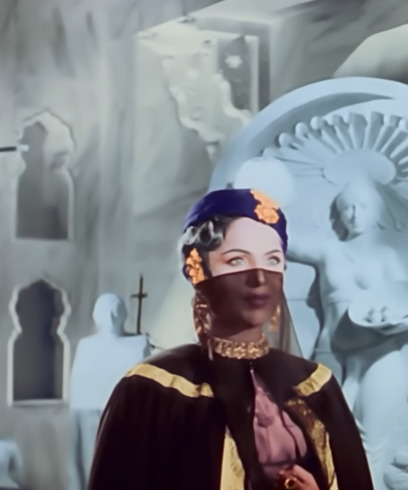







Taaz Dusro ke haatho se pehna jata hai
Bahar: "Haath dusre ke hothe hai lekin himmat apni hoti hai"
Mughal-e-Azam (1960)
#Nigar Sultana#She was a real Baddie#Mughal-E-Azam#ambition#royaltycore#classics#mughal e azam#vintage#bollywood#hindi cinema#indian cinema#desiblr#desi aesthetic#old bollywood#mughal empire#royalty#desi#love#Bahar#beauty
73 notes
·
View notes
Photo


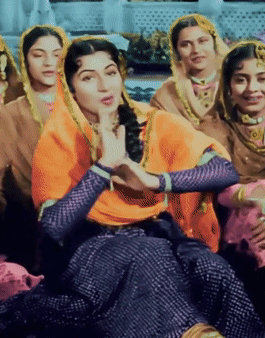



Mughal-e-Azam (1960) | Anarkali’s costumes
#mughal e azam#costumeedit#perioddramaedit#mughal-e-azam#madhubala#anarkali#perioddramagif#perioddramanet#bollywood#bollywoodedit#desiblr#desi tag#bollywoodgif#india#desi#costumes#mughal e azam 1960#mughal#history#hulderposts#faves
449 notes
·
View notes
Photo
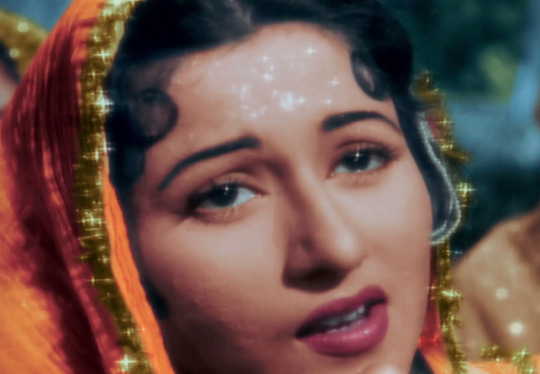
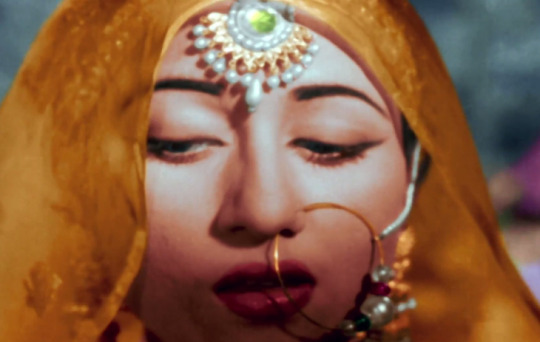
Mughal-E-Azam (1960)
132 notes
·
View notes
Text
'Kya parvardigar-e-alaam se aapne mujhe isiliye manga tha ke zindagi mujhe mile aur uske maalik aap hon? Saansein meri hon aur dil ki dhadkanon par aapka kabzaa rahe? Zille elahi, kya meri zindagi aapki duaon ka karza hai jo mujhe apne aansoon se ada karna padega?'
salim, mughal-e-azam
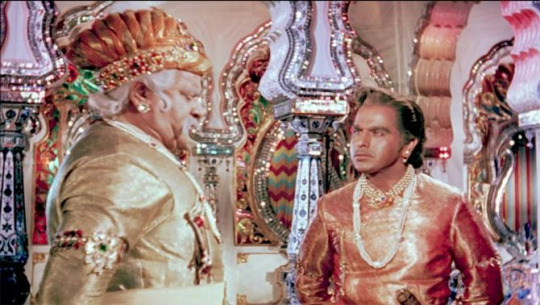
#desiblr#desi aesthetic#desi shit posting#desi stuff#bollywood songs#old bollywood#bollywood#mughal-e-azam#salim#akbar#movies#bollywood movies#old movies
10 notes
·
View notes
Text
"Gham-e-dil se daman bacha kar zara hum bhi dekhenge"
Mughal-e-azam
11 notes
·
View notes
Photo

Mughal-E-Azam (1960)
#mughal e azam#mughal-e-azam#dilip kumar#madhubala#indian cinema#hindi cinema#cinema#films#movies#bollywood#old bollywood#k asif#k. asif
58 notes
·
View notes
Text
Historical films more than depicting historical accuracy deals with concerns of the time they are made in.
By the third decade, i.e the 1920s, of the advent of cinema in India historicals had emerged as a significant genre in Indian Cinema(to remind that the first Indian feature film Raja Harishchandra by Phalke was a historical.
Most of the source of plots and narratives of these were from Pre-British Islamic Empires and the Hindu Mythological tales in India.
These films had an anti-colonial…

View On WordPress
3 notes
·
View notes
Text
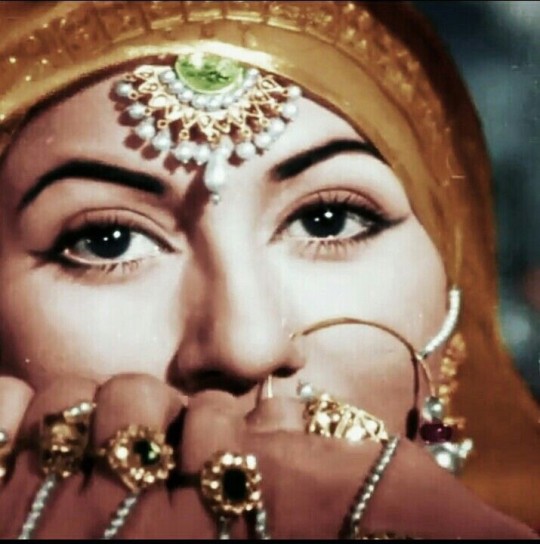



madhubala in mughal-e-azam♡
definitely one of my favorite actress from the 40s-50s
9 notes
·
View notes
Text
reading the cask of amontillado oh this is so mughal-e-azam coded
0 notes
Text
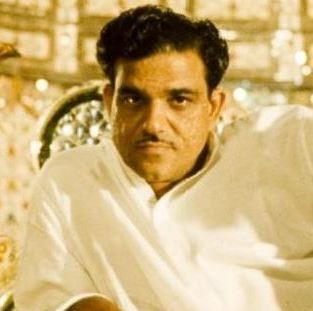
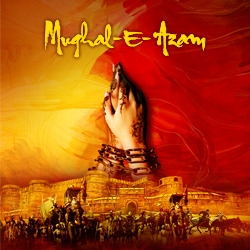
Photographs sourced from Wikipedia. K. Asif and a poster for the Mughal-e-Azam Musical.
Mughal-e-Azam and Shakespeare
This past weekend we saw the musical production “Mughal-e-Azam”. This is a work from our parent’s generation, and I had not paid much attention to it until now. However, at my current age, I saw it in a different light and was deeply moved by it. Given that our daughter has a keen interest in Shakespeare, and we have seen several of the playwright’s works, I was drawn to examine the possible parallels. Asif’s use of a live person instead of a sculpture, not unlike in A Winter’s Tale by Shakespeare was a tip off.
This being 2023, I asked ChatGPT three questions:
What are the parallels between Shakespeare and K. Asif's works?
Which Shakespeare plays drew upon previous monarchs from history?
Are there any parallels between Mughal-e-Azam and the works of William Shakespeare?
To be honest, I asked these questions in reverse order and each answer led me to the next question.
Finally, I asked a fourth question that our daughter suggested – “What was K. Asif's inspiration for Mughal-e-Azam?”. Surprisingly, this last question did not turn up any reference to Shakespeare.
See the verbatim Q&A with ChatGPT below.
What are the parallels between Shakespeare and K. Asif's works?
While William Shakespeare and K. Asif belong to different eras and cultural contexts (Shakespeare being a renowned playwright from Elizabethan England and K. Asif being a celebrated filmmaker from India), there are some thematic and narrative parallels that can be drawn between their works, particularly in the case of K. Asif's magnum opus "Mughal-e-Azam." Here are a few parallels:
Tragic Love Stories: Both Shakespeare and "Mughal-e-Azam" explore themes of love, passion, and tragedy. Many of Shakespeare's plays, such as "Romeo and Juliet" and "Othello," delve into the complexities of love that lead to tragic outcomes. Similarly, "Mughal-e-Azam" presents a poignant tale of forbidden love between Prince Salim and Anarkali, culminating in a tragic ending.
Parental Opposition: In both Shakespeare's plays and "Mughal-e-Azam," parental opposition to romantic relationships is a significant theme. Shakespeare's "Romeo and Juliet" features the feuding families of Montague and Capulet, while in "Mughal-e-Azam," Emperor Akbar opposes the love between Prince Salim and Anarkali due to societal and class differences.
Conflict between Duty and Desire: Both Shakespeare and "Mughal-e-Azam" explore the conflict between personal desires and societal duties. Characters in Shakespeare's plays often grapple with the clash between their passions and the expectations of their roles. Similarly, in "Mughal-e-Azam," Prince Salim faces the dilemma of choosing between his love for Anarkali and his responsibilities as a prince.
Complex Characters: Both Shakespeare and "Mughal-e-Azam" create multidimensional characters with intricate motivations. Shakespeare's characters are known for their psychological depth and internal struggles. Similarly, characters like Prince Salim and Anarkali in "Mughal-e-Azam" are portrayed with emotional complexity and inner turmoil.
Power and Authority: Shakespeare often explored themes of power, ambition, and the consequences of leadership. In "Mughal-e-Azam," the portrayal of Emperor Akbar's rule and his decisions reflects similar themes of power dynamics within a royal court.
Timeless Themes: Both Shakespeare's plays and "Mughal-e-Azam" address universal themes that transcend time and cultural boundaries. Love, jealousy, loyalty, and the human condition are explored in ways that continue to resonate with audiences across different eras and regions.
While the historical and cultural contexts of Shakespeare's works and "Mughal-e-Azam" are distinct, the exploration of human emotions and relationships forms a common thread that allows us to draw parallels between their narratives.
Which Shakespeare plays drew upon previous Monarchs from history?
William Shakespeare drew upon previous monarchs from history for several of his plays. Some of his historical plays are centered around actual historical figures and events, including monarchs and rulers. Here are a few examples:
"Richard II": This play focuses on the reign and downfall of King Richard II of England. The play explores themes of power, legitimacy, and the consequences of weak leadership. Richard II was a historical monarch who ruled from 1377 to 1399.
"Henry IV, Part 1" and "Henry IV, Part 2": These two plays are centered around the reign of King Henry IV of England. They depict the challenges and conflicts faced by Henry IV, including his strained relationship with his son, Prince Hal, who later becomes King Henry V.
"Henry V": This play continues the story of King Henry V, portraying his campaigns in France, including the famous Battle of Agincourt during the Hundred Years' War. It emphasizes leadership, patriotism, and the complexities of ruling.
"Henry VI, Part 1," "Henry VI, Part 2," and "Henry VI, Part 3": These plays are part of the Wars of the Roses historical series and focus on the tumultuous reign of King Henry VI of England. They delve into the Wars of the Roses, a series of conflicts for the English crown between the houses of Lancaster and York.
"Richard III": This play follows the rise and fall of King Richard III of England, a controversial figure known for his role in the Wars of the Roses. It portrays Richard's ruthless pursuit of power and his ultimate downfall.
"Macbeth": While not a historical play in the same vein as the others mentioned, "Macbeth" is loosely based on the historical figure Macbeth, a Scottish king who ruled in the 11th century. Shakespeare adapted this history into a dramatic tragedy, exploring themes of ambition, guilt, and the corrupting influence of power.
These historical plays by Shakespeare often blended historical facts with artistic liberties for dramatic effect. They explore political intrigue, personal motivations, and the complexities of leadership through the lens of historical monarchs and rulers.
Are there any parallels between Mughal-e-Azam and the works of William Shakespeare?
Yes, there are parallels between the Bollywood film "Mughal-e-Azam" and the works of William Shakespeare, particularly his play "Romeo and Juliet." "Mughal-e-Azam," directed by K. Asif and released in 1960, is a classic Indian film that draws inspiration from the tragic love story of "Romeo and Juliet," a play written by William Shakespeare. Here are some of the parallels between the two:
Forbidden Love: Both "Mughal-e-Azam" and "Romeo and Juliet" revolve around the theme of forbidden love. In "Mughal-e-Azam," the central characters, Prince Salim (Jahangir) and Anarkali, fall in love despite societal and familial opposition. Similarly, in "Romeo and Juliet," the titular characters belong to feuding families (the Montagues and Capulets) and their love is forbidden due to this enmity.
Parental Opposition: In both stories, parental opposition plays a significant role in the conflict. In "Mughal-e-Azam," Emperor Akbar opposes the relationship between Prince Salim and Anarkali due to their differing social statuses. In "Romeo and Juliet," the families of Romeo and Juliet vehemently oppose their love because of the ongoing feud.
Tragic Endings: Both narratives end tragically. In "Mughal-e-Azam," Anarkali is sentenced to death by being entombed alive, and Prince Salim is heartbroken. In "Romeo and Juliet," the young lovers, unable to be together due to the circumstances, ultimately choose to die in each other's arms.
Love's Intensity: Both stories emphasize the intensity and purity of the love between the main characters. Their love transcends societal norms, family expectations, and even life itself.
Dramatic Elements: Both "Mughal-e-Azam" and "Romeo and Juliet" contain dramatic elements, including palace intrigues, emotional conflicts, and high-stakes decisions. These elements contribute to the emotional impact of the stories.
Cultural and Contextual Adaptations: "Mughal-e-Azam" adapts the basic love story of "Romeo and Juliet" to an Indian historical and cultural context, incorporating elements of Mughal royalty and courtly life. This adaptation adds a unique flavor while retaining the essence of the original tragic love story.
While "Mughal-e-Azam" draws inspiration from "Romeo and Juliet," it also incorporates its own cultural nuances and artistic expressions. This interplay between Shakespearean themes and Indian storytelling is a testament to the universality of love and tragedy across different cultures and time periods.
What was K. Asif's inspiration for Mughal-e-Azam?
K. Asif's inspiration for the iconic Bollywood film "Mughal-e-Azam" was rooted in his fascination with historical stories, grandeur, and the desire to create a cinematic masterpiece. The film's development took several years, and it was ultimately released in 1960. Asif drew inspiration from historical accounts, legends, and his passion for storytelling. The film's inspiration can be attributed to several factors:
Historical Interest: K. Asif had a deep interest in history and historical narratives. He was intrigued by the rich history of the Mughal era in India, which encompassed royal intrigues, love stories, and grand palaces.
Grandeur and Spectacle: Asif was known for his aspiration to create a grand and opulent film that would captivate audiences with its visual and emotional impact. "Mughal-e-Azam" was a testament to his dedication to creating a cinematic spectacle.
Legendary Romance: The legendary love story of Prince Salim (who later became Emperor Jahangir) and Anarkali was a popular tale in Mughal history and folklore. Asif was drawn to the tragic and forbidden love between a prince and a court dancer.
Historical Research: Asif conducted extensive research into the Mughal period, drawing from historical sources and accounts to craft an authentic backdrop for the film's narrative.
Desire for Excellence: Asif was committed to excellence in filmmaking. He wanted to bring a larger-than-life vision to the screen and showcase the grandeur of the Mughal court.
Artistic Vision: Asif envisioned "Mughal-e-Azam" as an epic that combined historical accuracy with artistic expression. He aimed to create an immersive experience that transported audiences to the Mughal era.
The making of "Mughal-e-Azam" was marked by its challenges and complexities, including the use of technology to create colorized versions of black-and-white footage and the meticulous attention to detail in costumes, sets, and music. The film's enduring legacy lies in its blend of historical drama, romance, and visual spectacle, all of which were deeply rooted in K. Asif's artistic vision and dedication to his craft.
1 note
·
View note
Text

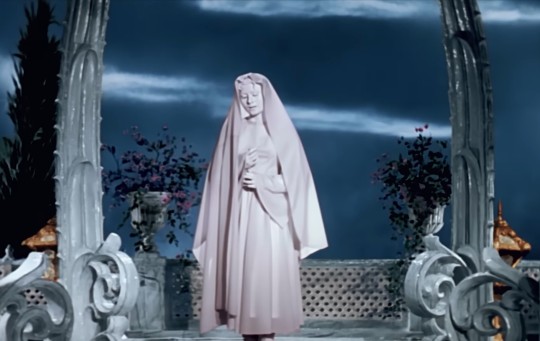
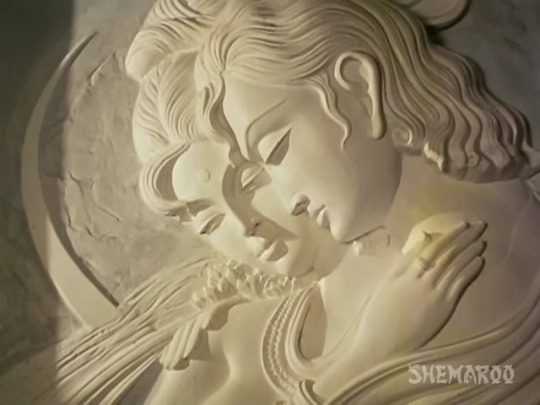
Art in Indian Cinema
Artist immortalizing the beauty of woman.
1. Amrapali (1966)
2. Mughal-e-azam (1960)
3. Neel Kamal (1968)
25 notes
·
View notes
Text
Mughal-e-Azam – A musical/ theatrical production Review
Seeing iconic, classical Mughal-e-Azam being performed on stage was a mesmerizing experience. Under Akbar, India had developed a strong and stable economy and the Mughal kingdom had tripled in size and wealth. Such a mighty king, at the pinnacle of success faced a moment of deep anguish and critical personal crises. Akbar married Hindu…

View On WordPress
#Akbar#Firoz Abbas Khan#Mughal-e-Azam#Nissar Khan#Priyanka Barve#Rupsha Mukharjee#Salim#Shapoorji Palonji Group#Sonal Jha
1 note
·
View note
Photo

Mughal-E-Azam (1960)
86 notes
·
View notes
Text
Madhubala the most expensive actress of 1950s
Madhubala the most expensive actress of 1950s
Madhubala was an most famous actress in films an idealized Indian woman can be seen in her performances. The producer is known for her portrayal of strong-willed and independent characters, who are portrayed as women in Hindi cinema.
A significant departure from earlier depictions of One of the most popular and highest-paid Indian entertainers during the 1950s audience.
Madhubala was active in…
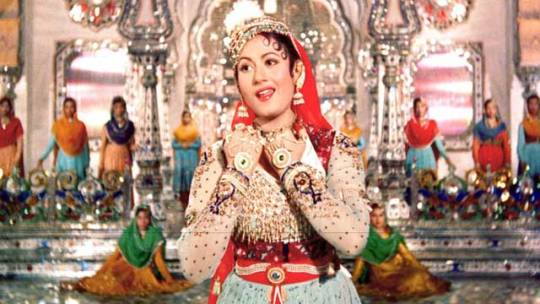
View On WordPress
1 note
·
View note